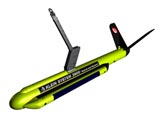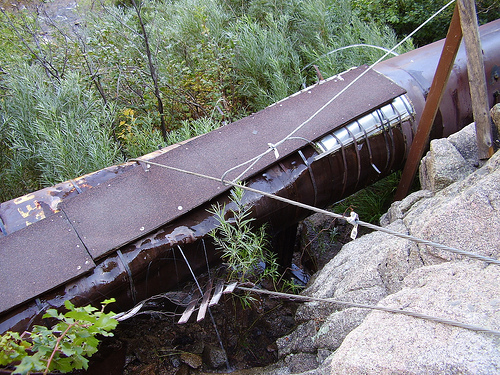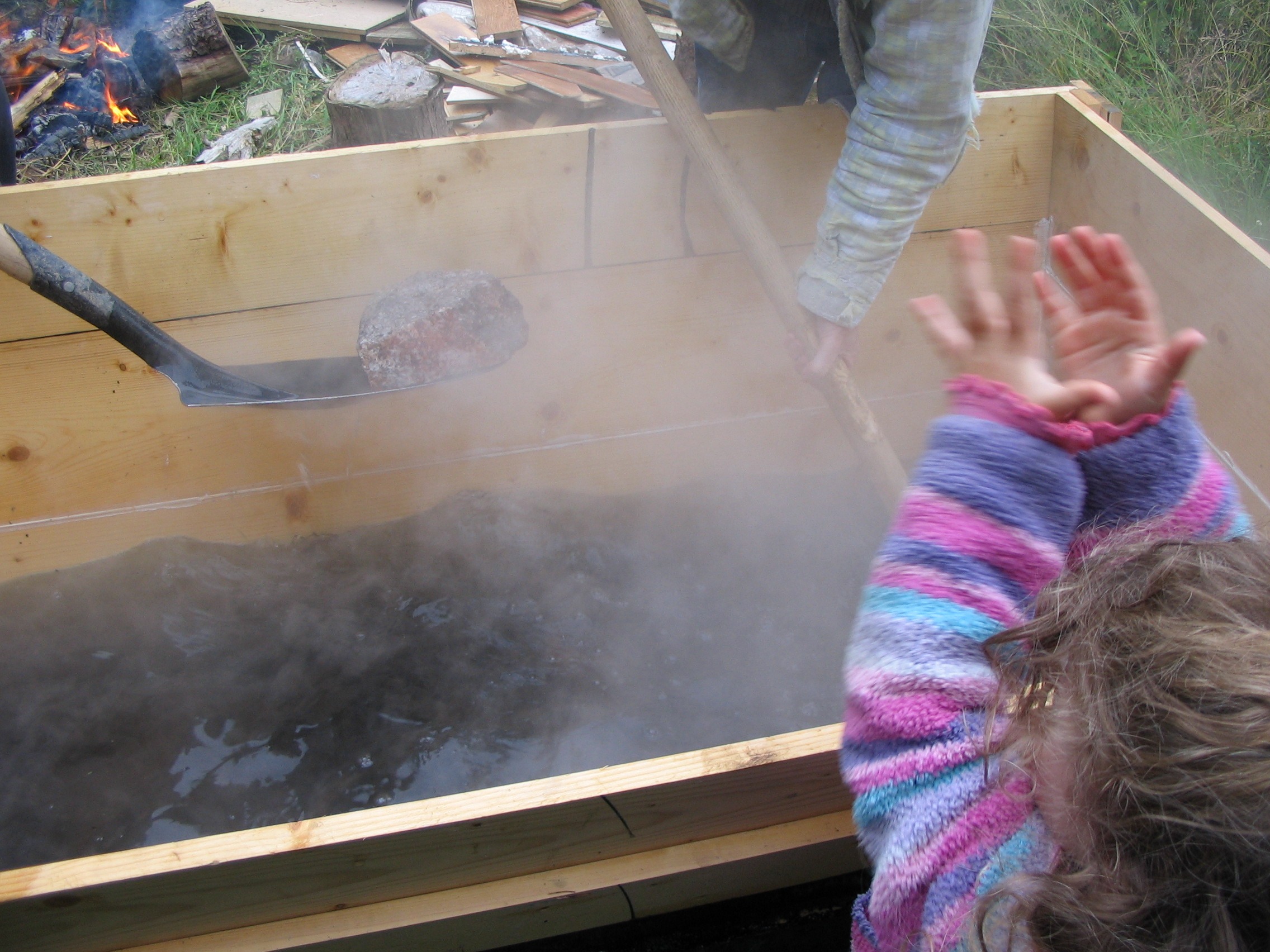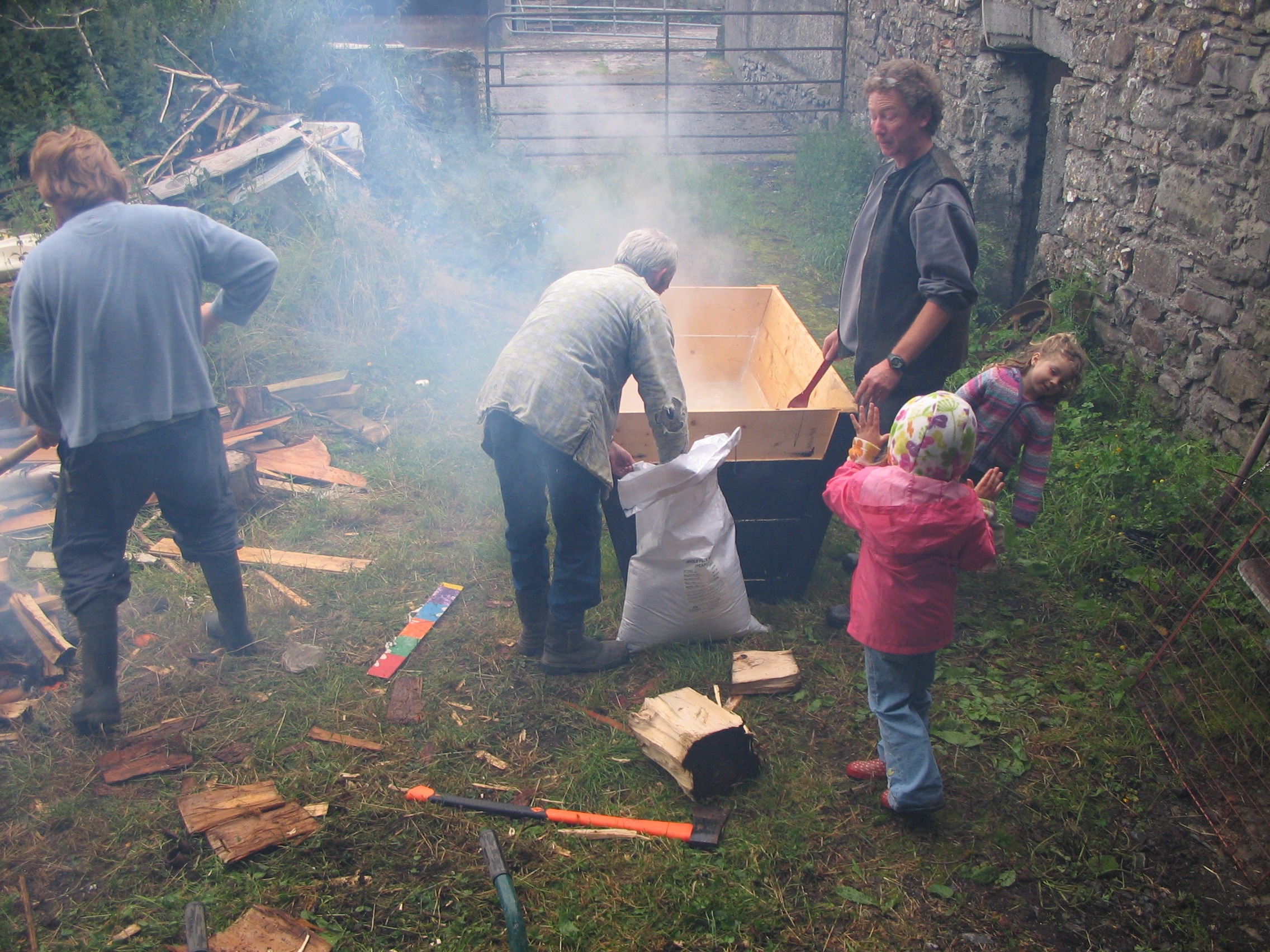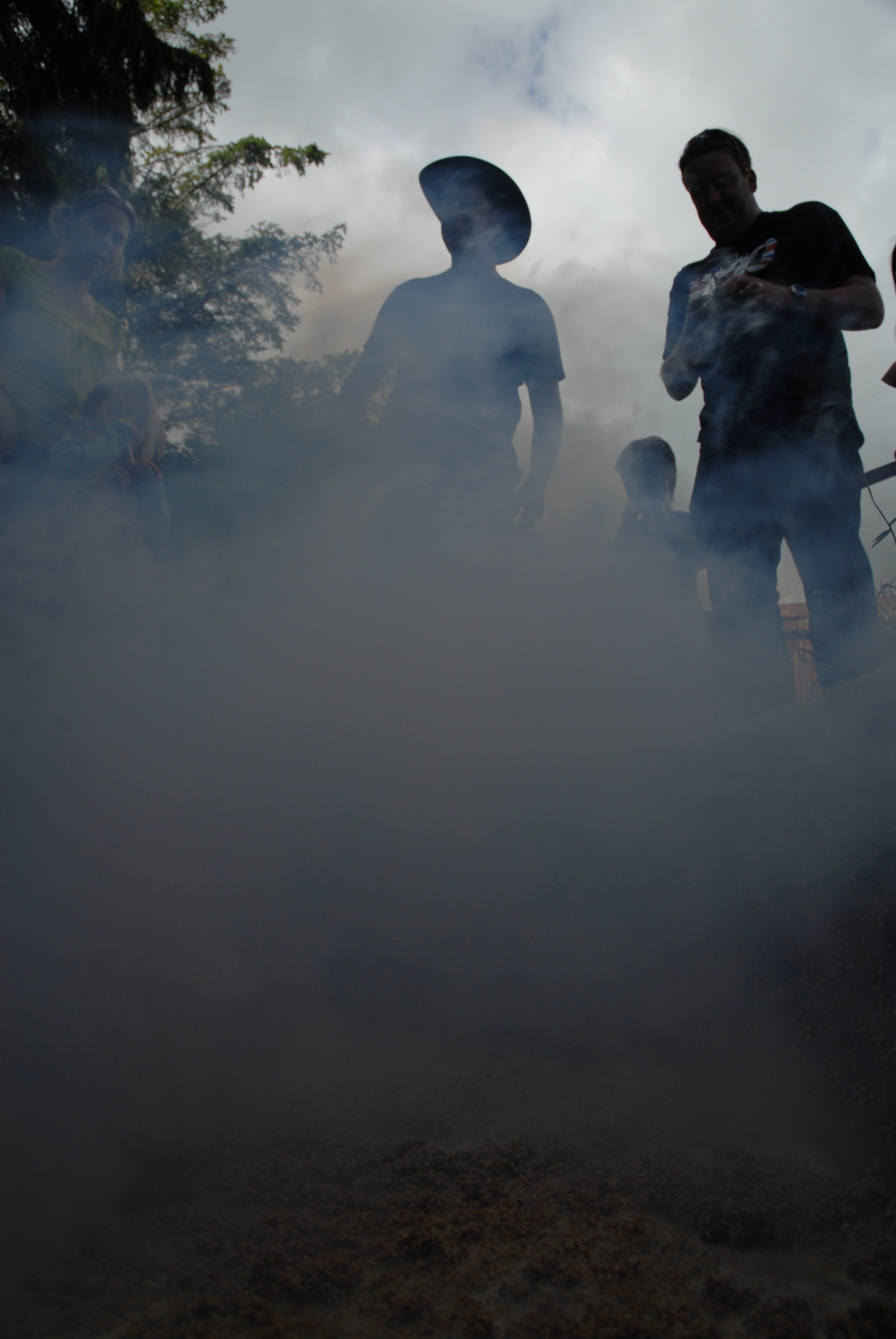Part four of Dining and Dwelling publication (Part one here, part two here and part three here)
CONCLUSION
So, what is the evidence for brewing? First, the experiment worked. Fermentation caused by wind-blown yeast even occurred in the leftover mash in the trough within a few hours. Secondly, a number of quern-stones have been found in association with fulachta fiadh (e.g. Hegarty 2005)—indicating that grain processing was taking place nearby. Furthermore the fact that hot-rock brewing was carried out to an industrial level until the early part of the last century testifies to the efficiency of the process.
But what of the physical evidence, should not excavated fulachta fiadh contain archaeobotanical remains indicative of malted barley? It is our contention that the spent grain even after mashing had its uses and would not have been dumped, rather it was treated as a valuable resource and may have been recycled to make bread or as brewers do to the present day, given to animals as fodder.
The grain normally found on archaeological sites is usually charred and survives due to its carbonised state making it less susceptible to decay. Charred grain has no nutritional value and certainly has no place in brewing as it would spoil a beer mash.
Ordinary malted grain after mashing is reduced to a non-starchy material consisting of a cellulose pulp comprising the hull and pericarp (the tissue around the seeds). This pulp still contains sugar residues and given its de-natured state and its high water content is more vulnerable to microbiological decay if left exposed to the elements. In the archaeological record, given the time frame, this evidence would be entirely ephemeral. Indeed, our own experience in dumping spent grain in Billy’s backyard, although hardly scientific, was telling—within a matter of three months the dumped grain (approximately 125 kg) had disappeared and it was practically impossible to determine the exact dumping spot. The spent grain was eaten by animals, birds or vermin or simply decayed.
In conclusion, beer at its most basic is fermented liquid bread and is a highly nutritious beverage. Our ancestors would have consumed ale on a daily basis as a healthy, uncontaminated, comfort drink. But this does not preclude the fact that in the long Bronze Age evenings and nights, family groups likely sat around a blazing fire telling tales, interacting socially and enjoying the wellbeing and genial companionship that ale enhances. We suggest that the fulacht fiadh was possibly multifunctional, the kitchen sink of the Bronze Age, with many conceivable uses but for us, however, a primary use seems clear—these sites were Bronze Age micro-breweries.

Enjoying the fruits of our labour
REFERENCES
Barclay, G.J & Russell White, C.J. 1993 Proceedings of the Society of Antiquaries of Scotland Vol 123, 1993, p. 42.
Brown, P 2003 Man Walks into a Pub. Macmillan, London.
Civil, M 1964 ‘A Hymn to the Beer Goddess and a Drinking Song’, Studies Presented to A. Leo Oppenheim, June 7, 1964. The Oriental institute of the University of Chicago, 1964
Cotter,C. Western Stone Fort Project, Discovery Programme Reports Vol. 1, Royal Irish Academy, Dublin, P.13.
Dineley, M 2004 Barley, Malt and Ale in the Neolithic. Archaeopress, Oxford.
Dudley, R 2004 ‘Ethanol, fruit ripening, and the historical origins of human alcoholism in primate frugivory’, Integrative and Comparative Biology, Vol. 44, No. 4, 315–323.
Dudley, R & Stephens, D 2004 ‘The drunken monkey hypothesis: the study of fruit-eating animals could lead to an evolutionary understanding of human alcohol abuse’, Natural History, December 2004.
Griffiths, I 2007 Beer and cider in Ireland. Liberties Press, Dublin.
Haggarty, A 1991 Proceedings of the Society of Antiquaries of Scotland Vol 121, 1991, p. 51.
Hegarty, L 2005 ‘A saddle quern discovered on Site 43, in Balyduff East, on the route of the N25 Waterford City Bypass’, in J O’Suliivan & M Stanley (eds), Recent Archaeological Discoveries on National Road Schemes 2004, 45–50. Archaeology and the National Roads Authority Monograph Series No. 2. National Roads Authority, Dublin.
Connellan O, 1846 Annála ríoghachta Éireann. The Annals of Ireland, translated from the original Irish of the four masters, with annotations by P. MacDermott, M.D. (Dublin: Published by Bryan Geraghty 1846) [copy presented by J. L. Richardson, 1963 in Marsh’s Library.
Hornsey, I 2003 ‘A History of Beer and Brewing’ RSC Paperbacks, Cambridge, P.194.
McGovern et al, 2004 ‘Fermented Beverages of Pre- and Proto-Historic China’, Proceedings of the National Academy of Sciences. USA, 2004.
Michel, R.H., McGovern, P.E. & Badler, V.R. 1992 Nature, Vol 24, 360.
Nelson, M 2005 The Barbarian’s Beverage: a history of beer in ancient Europe. Routledge, New York.
O’Kelly, M J 1954 ‘Excavations and experiments in ancient Irish cooking places’, Journal of the Royal Society of Antiquaries of Ireland, Vol. 84, 105–55.
Ó Néill, J 2004 ‘Lapidibus in igne calefactis coquebatur: the historical burnt mound tradition‘, The Journal of Irish Archaeology, Vols 12 & 13, 2003–4, 79–85.
Quinn, B & Moore, D 2007 ‘Ale brewing and fulachta fiadh’, Archaeology Ireland, Vol. 21, No. 3, 8–17.
Sparrow, J 2005 Wild Brews: beer beyond the influence of brewer’s yeast. Brewers Publications, Boulder.
INTERNET RESOURCES
St. Brigid and the Bathwater.
Internet resource, accessed March 2008.
http://zythophile.wordpress.com/2008/01/22/st-brigid-and-the-bathwater/
Odin’s glass of Nectar
Internet resource, accessed April 2007
www.beerhunter.com/documents/19133-000103.html
Sahti – A remnant of Finland’s Rustic Past, Ilkka Sysila.
Internet resource, accessed April 2007
www.brewingtechniques.com/library/styles/6_4style.html
St Patrick and Mescan
Internet resource, accessed April 2007
www.mohurley.blogspot.com/2009/03/from-annals-of-4-masters-st-patrick.html
ACKNOWLEDGEMENTS
We acknowledge the assistance and advice of Merryn and Graham Dineley, Max Nelson, The Hooker Brewing Company, Pete Brown, Libby Best and Maree Daffy, Moore Group and everyone else who helped.

